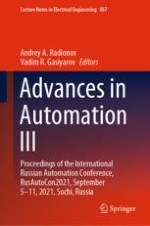This book reports on innovative research and developments in automation. Spanning a wide range of disciplines, including communication engineering, power engineering, control engineering, instrumentation, signal processing and cybersecurity, it focuses on methods and findings aimed at improving the control and monitoring of industrial and manufacturing processes as well as safety. Based on the International Russian Automation Conference, held on September 5–11, 2021, in Sochi, Russia, the book provides academics and professionals with a timely overview of and extensive information on the state of the art in the field of automation and control systems, and fosters new ideas and collaborations between groups in different countries.
